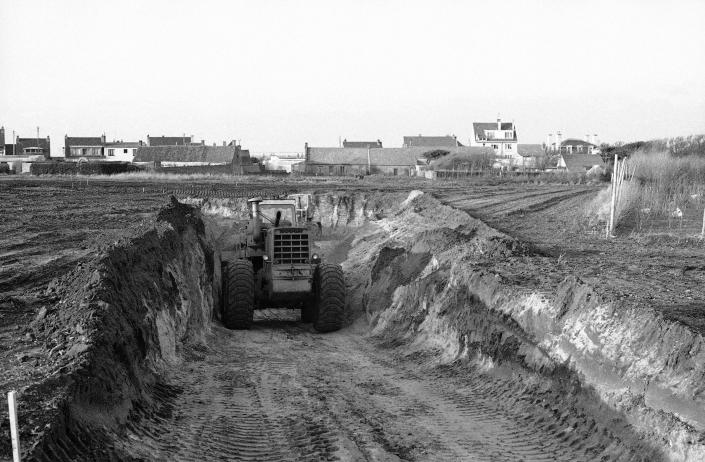
At an age when my classmates have been fascinated with dinosaurs or taking part in Cowboys and Indians, I picked up a guide titled “Engineers’ Goals” and was hooked. Thus started a lifelong curiosity in initiatives related to engineering ideas about bettering our world.
The creator, Willy Ley, sketched the outlines of some giant civil initiatives together with the event of the Channel Tunnel connecting Britain with France. After all, the tunnel has been in use for 28 years. He additionally explored concepts for producing electrical energy. With photo voltaic and wind energy main the way in which, each one in every of his era schemes has seen important improvement since.
Given my pursuits, I used to be drawn to a latest letter in The Desert Solar proposing to resolve the scarcity of water within the Southwest by bringing water from the Mississippi River.
This isn’t the primary proposal to seek out water for the Southwest. One such scheme, made greater than 50 years in the past, would have introduced water from Alaska and Canada to feed into the Columbia, Missouri, and Colorado River techniques. Other than worldwide political and environmental concerns, the proposal was sunk by a forecast return on funding of about 5 cents for each greenback invested. I questioned would the Mississippi water scheme have a greater return?
Moreover, how would I register the feasibility of this scheme towards the creator’s rivalry that two reference initiatives — the California Aqueduct and the Alaska Pipeline — represented far harder initiatives than he envisioned this plan to be. Marshalling a number of information challenged that supposition.
The proposed circulation of 250,000 gallons/second represents loads of water. Changing it right into a extra regular engineering unit, this could characterize about 32,000 cubic ft/second (CFS). That occurs to be about the identical charge of circulation as passes by way of the producing generators at Hoover Dam at full capability. Within the unique letter, this circulation was accurately calculated as the quantity of circulation essential to fill Lake Energy in a single yr. Even at right now’s report low degree, Lake Energy just isn’t empty. Lesser flows may scale back the prices and problem of the venture whereas nonetheless offering important advantages.
The Alaska Pipeline is a major venture. It concerned development, in forbidding situations, of a 48-inch diameter pipeline about 800 miles lengthy. The height capability circulation charge is 2 million barrels per day, or about 100 CFS. So, as a comparability, pumping the proposed quantity of water from the Mississippi would contain a distance roughly twice as lengthy for a circulation about 320 occasions as nice.
The California Aqueduct entails a peak circulation of 13,000 CFS over a distance of about 450 miles. As proposed, this Mississippi diversion venture would contain 2½ occasions as a lot water over a distance almost 4 occasions as lengthy.
One massive problem of the California Aqueduct is pumping water to a peak of 1,926 ft, which requires huge pumping tools. Our Mississippi diversion scheme has a web distinction in elevation of three,700 ft from New Orleans to Lake Powell, or a terminus almost twice as excessive as the very best level within the California Aqueduct. This final distinction is very important as a result of the autumn from 1,926 ft to close sea degree may, in principle, be used to generate some energy to offset the pumping energy requirement. That choice just isn’t totally obtainable in pumping to three,700 ft.
The height elevations required for pumping the water are possible a lot higher than the web distinction of three,700 ft. If we low cost the upper elevations the water must be pumped to, we nonetheless have to supply the ability to boost the water to three,700 ft. Utilizing the ability plant at Hoover Dam as a reference, this could require about 12,000 megawatts of pumping energy.
The ability requirement of the circulation would require at the least the equal capability of about 5½ occasions the ability output of the brand new Plant Vogtle nuclear facility in Georgia. Plant Vogtle has been estimated to value over $28 billion. Thus, our water pumping scheme may incur a value of $150 billion for the ability vegetation alone.
“Wait you say, what about wind energy as an alternative of nuclear? Absolutely that will be cheaper.” Sure, it might, however there are, after all, challenges. A wind turbine can not reliably produce energy 24 hours a day, one year a yr. So the put in wind energy capability can be higher than the present capability from the 150 wind farms in Texas.
As a nation, we have now seemingly misplaced our urge for food for giant initiatives. I don’t assume this one will overcome that reluctance.
John Homer is knowledgeable engineer working in retirement as a marketing consultant on development initiatives. He lives close to Indianapolis and might be reached at JohnHomerIN@gmail.com
This text initially appeared on Palm Springs Desert Solar: Engineer evaluates thought of pumping water from Mississippi to West




